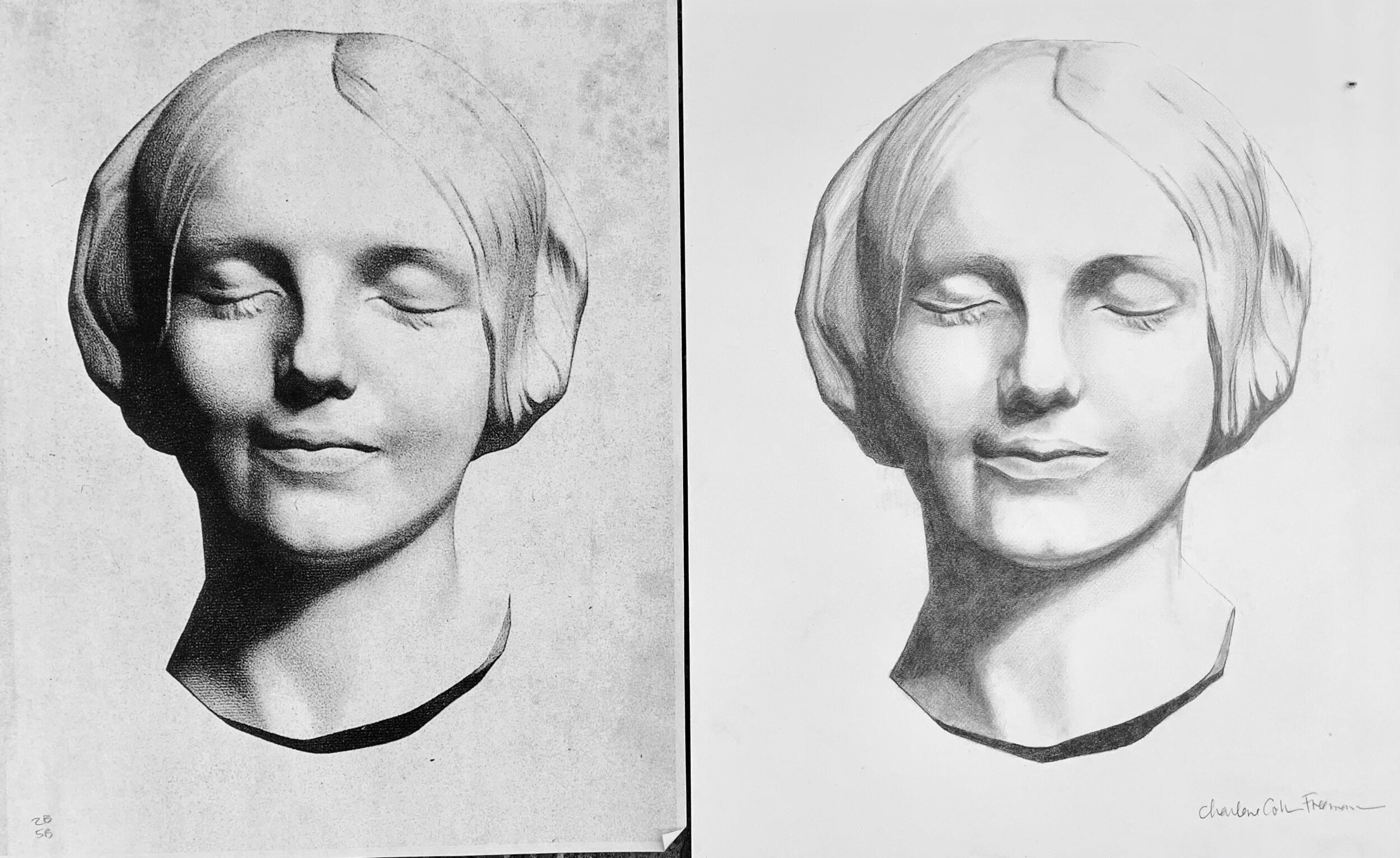This is my latest pencil drawing, based on a work by Charles Bargue, an artist from the 1800s who created a famous drawing course. After drawing this lovely face I wanted to learn more about the model and I did a bit of research. I found a fascinating backstory.
L’Inconnue de la Seine
Nobody knows what her name was, her age, nor her background. We don’t know how her life brought her to Paris, and left her drowned in the River Seine. But when her lifeless body was pulled our from the murky waters of the Seine River at the Quai du Louvre in Paris around the late 1880s, she became known as L'Inconnue de la Seine (the unknown woman of the Seine).
L'Inconnue, who is estimated to have been about 16 years old when she died, had no marks on her body, and many concluded she took her own life. She was transported to the Paris mortuary, and put on public display alongside the bodies of other unknown dead, for the purpose of identification. This grisly parade of nameless corpses was a popular diversion in its day. Despite the crowds, nobody came forward to say they recognized L'Inconnue.
Although she remained unclaimed, the loveliness of her expression inspired an attendant at the mortuary, who – so the story goes – was so transfixed by her, he ordered a plaster cast to be made of her face. Before long, L'Inconnue's alluring, deathly likeness was reproduced and sold in souvenir shops across France, then Germany, Europe and in North America.
The mask of this unknown girl became a cultural icon. In time, L'Inconnue's frozen half-smile rested on mantels and hung in drawing rooms all over the continent. She was positioned in artists' workshops, gazed upon as a muse, and inspired thousands of artworks and literary works. Her mask embodied an ideal of beauty for generations. Albert Camus and others compared her enigmatic smile to that of the Mona Lisa, inviting numerous speculations as to what clues the expression in her face could offer about her life and her death. L’Inconnue became a muse for artists, poets and other writers, among them Pablo Picasso, Man Ray, Rainer Maria Rilke and Vladimir Nabokov.
Half a century after this explosion of fame and fascination, L’Inconnue transformed into something else again, Her face was used to create Rescue Anne, the mannequin that is still used today to teach CPR. Rescue Anne is considered to be the first and most successful 'patient simulator' ever – responsible for helping hundreds of millions of people learn the basics of how to save a life with CPR.
Charles Bargue (c. 1826/1827 – April 6, 1883), who is mostly remembered for his Cours de dessin, one of the most influential classical drawing courses (conceived in collaboration with Jean-Léon Gérôme), created this beautiful drawing from her plaster cast. And thousands of students have copied Bargue’s version of L’Inconnue since then. Here is Charles Bargue’s drawing.
She has been an enigmatic figure for me too, and I have thoroughly enjoyed the beauty and mystery her face have inspired. Like thousands of other artists, I too have drawn a copy of Charles Bargue’s rendering of her face. The process of creating this drawing over many hours has made me feel connected to the young woman, to history, to artists, and to humanity.
L'Inconnue's remains are thought to have been disposed of in an unmarked pauper's grave, and police records from the era make no mention of this mysterious girl.
In a studio called L'Atelier Lorenzi (https://www.atelierlorenzi.com) in Arcueil, France they still make plaster death masks from a 19th-century mold, which is said to be that of L'Inconnue de la Seine.





